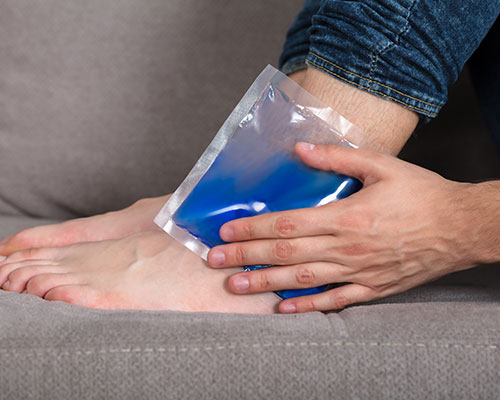New Injury Advice (P.R.I.C.E)
FEEL BETTER. MOVE BETTER. LIVE BETTER.
P.R.I.C.E. is an acronym that stands for protect, rest, ice, compress, and elevate.
It is used as a first-aid measure mostly for acute injuries but chronic injuries can also benefit. An acute injury develops suddenly like a sprained ankle, while chronic injuries develop over time.
Your main enemy in the hours following an acute injury is inflammation. The more swelling occurs, the more affected your tissue will be and the longer it will take to get back to full strength. That’s why it’s important to start the P.R.I.C.E. regimen at once.

Heat vs. Ice
Heat and ice are both helpful in healing injuries but they work in very different ways. Ice decreases blood flow by initially slowing blood flow and constricting the blood vessels. Your brain then perceives that area of the body as cold, and sends more blood there to warm it up. The first few days following an injury, ice can be extremely helpful for reducing swelling.
Heat increases blood flow by opening up (dilating) the blood vessels. It can be used beginning 48 to 72 hours after an acute injury. If used earlier, it may increase swelling and inflammation. After two or three days, both heat and ice can be used. Alternating ice with heat (called contrast baths) can have the effect of flushing stale inflammatory fluids from the area and bringing in nutrient-rich fluids.
Using these protocols will help control any injuries you may suffer. Any serious injury or anything lasting more than 2-3 days should be assessed by your doctor of chiropractic.
